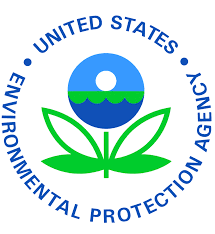Chemycal has been acquired by 3E
Learn MoreChemycal has been acquired by 3E
Learn MoreDiscover how Chemycal PRO helps you boosting your regulatory monitoring:

Today, the U.S. Environmental Protection Agency (EPA) finalized a rule that adds 12 chemicals to the list of chemicals subject to Toxics Release Inventory (TRI) reporting requirements. Facilities that are covered by TRI and meet reporting requirements for these chemicals will now be required to report to EPA on quantities of these chemicals that are released into the environment or otherwise managed as waste. The first reports on these chemicals will be due to EPA July 1, 2024, for calendar year 2023 data.
TRI data are reported to EPA annually by facilities in certain industry sectors and federal facilities that manufacture, process, or otherwise use TRI-listed chemicals above certain quantities (typically 25,000 pounds for manufacturing or processing, or 10,000 pounds for a chemical that is otherwise used).
Information collected through the TRI allows communities to learn how facilities in their area are managing listed chemicals. The data collected also help companies, government agencies, non-governmental organizations, and the public make informed decisions. This information can be especially important to fenceline communities (i.e., communities near industrial uses of these chemicals where releases to water, air, or land could have a greater impact).
In 2014, the Toxics Use Reduction Institute (TURI) submitted a petition under Section 313(e) of the Emergency Planning and Community Right-to-Know Act (EPCRA) requesting EPA add 25 chemicals to the TRI. EPA evaluated the 25 chemicals to determine if they met the TRI listing criteria of EPCRA Section 313(d)(2). In October 2021, EPA responded to the petition by proposing a rule to add 12 of the 25 chemicals to the TRI chemical list. Today’s rule is being finalized without any significant changes from the proposed rule.
The 12 chemicals that are now subject to TRI reporting requirements are:
EPA has also classified one of the chemicals, 1,3,4,6,7,8-
In separate, unrelated actions, three of the 25 chemicals named in the TURI petition (1-bromopropane, nonylphenol, and 1,2,5,6,9,10-
SOURCE: US EPA Newsleeter (29.11.2022)
2013 © MyChemicalMonitoring. ALL Rights Reserved. About Us | Terms and Conditions